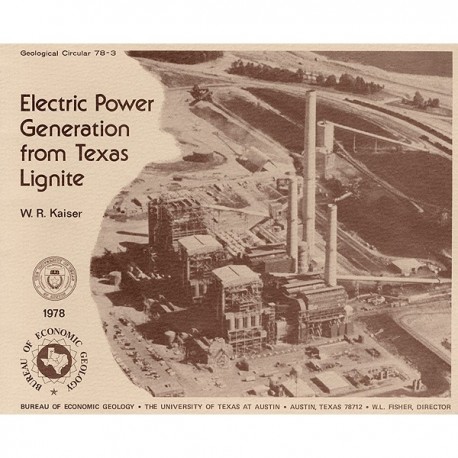Geological Circulars
-
Books & Reports
- Reports of Investigations
- Guidebooks
- Udden Series
- Geological Circulars
- Down To Earth
- Atlases of Major Oil and Gas Reservoirs
- Texas Memorial Museum Publications
- Environmental Geologic Atlas of the Texas Coastal Zone
- Mineral Resource Circulars
- Other Reports
- Seminars and Workshops
- Handbooks
- Submerged Lands of Texas
- Symposia
- Annual Reports
- Open File Reports
-
Maps & Cross Sections
- Thematic Maps
- Miscellaneous Maps, Charts & Sections
- Geologic Atlas of Texas
- STATEMAP Project Maps
- Geologic Quadrangle Maps
- Cross Sections
- Highway Geology Map
- Energy and Mineral Resource Maps
- Shoreline Change and Other Posters
- Wilcox Group, East Texas, Geological / Hydrological Folios
- Bouguer Gravity Atlas of Texas
- River Basin Regional Studies
- Featured Maps
- Posters
- Teachers & the Public
-
Geological Society Publications
- Gulf Coast Association of Geological Societies
- Alabama Geological Society
- Austin Geological Society
- Corpus Christi Geological Society
- Houston Geological Society
- Lafayette Geological Society
- Mississippi Geological Society
- New Orleans Geological Society
- South Texas Geological Society
- GCS SEPM Publications
- Historic BEG & UT Series
GC7803. Electric Power Generation from Texas Lignite, by W. R. Kaiser. 18 p., 8 figs., 12 tables, 1978. ISSN: 0082-3309. Print.
To purchase this publicaton as a PDF download, please order GC7803D.
ABSTRACT
Lignite is a rediscovered energy in Texas because lignite-produced energy is 3 to 7 times cheaper than intrastate natural gas. Production has risen from 18,000 short tons in 1950 to 14 million tons in 1976 and will exceed 50 million tons by 1985. Currently installed lignite-fired generating capacity is 3410 MW and may reach 11,475 MW in 1985. Steam-electric stations up to 3000 MW, are planned; individual generating units are 120 to 750 MW.
Lignite occurs in three Eocene stratigraphic units: Wilcox Group, Yegua Formation, and Jackson Group. Statewide resources of strippable lignite are set at 12.2 billion tons. On an as-received basis, grade ranges from 4300 to 7600 Btu/lb, 20- to 40-percent moisture, 10- to 40-percent ash, and 0.6- to 2.3-percent sulfur. The best grade (average 7100 Btu/lb) and largest deposits (as much as 400 million tons) occur in the Wilcox of East Texas where all operating mines are located. Future mines will tap Jackson lignite, the State's poorest grade lignite. Overburden is removed by dragline side casting using machines with buckets of 9 to 94 yd3 and booms of 175 to 335 ft. Stripping ratios are less than 10:1 but are expected to increase to 15:1, whereas maximum mining depth is not likely to exceed 150 ft. Dragline productivity ranges from 235,000 to over 300,000 bank yd3/bucket yd3/year. Loading is by shovel (2 to 16 yd3), front-end loader, and backhoe. Mine-mouth transportation is by truck (25 to 150-ton), truck and rail, and truck and conveyor belt. Adequate rainfall, rolling topography, unconsolidated overburden, and moderate sulfur content favor successful reclamation. Cost is 5 to 10 cents per ton of coal mined.
Fouling and slagging of pulverized-coal boilers burning Wilcox lignite has not been an operating problem. However, control of particulate emissions is a problem and is attributed to high ash resistivity. Electrostatic precipitations, baghouses, and gas conditioning are used for particulate control. Wet-limestone throwaway SO2 control systems are being installed on newer units. Boilers that will burn high-fouling South Texas Jackson lignite are conservatively designed with low-volume heat release (7500 Btu / ft3-hr) low gas-exit temperature, extra furnace height, wider tube spacing, and numerous soot blowers.
Keywords: electric power, electricity, Jackson Group, lignite, Texas, Wilcox Group, Yegua Formation
Citation
Kaiser, W. R., 1978, Electric Power Generation from Texas Lignite: The University of Texas at Austin, Bureau of Economic Geology, Geological Circular 78-2, 18 p.


